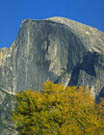
It seems unlikely that Washington could repay its debts by raising more tax revenue. After all, Chris Cox and Bill Archer reported in these pages that the Treasury could not cover the $8 trillion required to avoid going deeper into debt even if the IRS confiscated all taxable corporate income and all the adjusted gross income of taxpayers reporting more than $66,000.
So what federal assets could be sold to meet debt payments? Consider the one-third of America held in federal lands. The Bureau of Land Management administers a whopping 253 million acres. Private grazing land goes for at least $1,000 per acre. If you add to that the oil, gas and mineral potential, that land ought to fetch at least $2,000 per acre, or $500 billion in total.
Throw in the 193 million acres held by the U.S. Forest Service. Timber lands alone could average $2,000 per acre. Factor in the Forest Service’s oil, gas, minerals and recreational lands, and the average acre could reasonably go for $3,000, or $570 billion total.
That is already more than a trillion dollars from asset sales.
Then there is the Outer Continental Shelf, land under the ocean within 200 miles of the coast, which is known to have huge oil and gas reserves. In 2008, the Congressional Budget Office projected federal revenues from these lands to be $10.5 billion. Using a 5% discount rate, the present value would easily exceed $200 billion.
Then there are the crown jewels: national parks. Disney might pay many billions for the 2.2 million acres of Yellowstone. Throw in Yosemite, the Grand Canyon and the Everglades, and we might be talking another trillion.
Why stop there? Uncle Sam possesses any number of other assets with substantial market value, including patents at the Pentagon and national artifacts held by the Library of Congress and in museums. A Smithsonian yard sale would really pull ’em in.
But surely politicians would not resort to selling national treasures to cover debt—or would they? Over the summer, Greece’s government prepared to sell public property to raise more than $40 billion. Selling assets is what companies or governments facing bankruptcy must do. Witness Kodak’s current effort to avoid bankruptcy by selling off its patents for $500 million.
Instead of selling public properties, Washington politicians could start better managing their land portfolio. They could increase revenues by charging more realistic prices for visiting the national parks. Currently gate fees at Yellowstone are a mere $25 for a seven-day visit. A $1 increase in the fee for each visitor to a national park would more than offset the $218 million budget reduction the U.S. Park Service will face if automatic spending cuts go into effect at the end of the year. Congress could also lease more lands for commodity production, such as the Arctic National Wildlife Refuge, which the Congressional Research Service estimates would bring in $191 billon over 30 years.
The U.S. government is no different from a homeowner facing foreclosure. Either it earns more money, adjusts its spending habits or gives up its assets. Washington has few options for raising more revenue without disrupting long-run growth, and no one wants to see America’s public treasures sold. Besides, all those sales would likely bring in only a few trillion—not enough to keep creditors at bay for long.
That leaves only one alternative: Go on a fiscal diet.
A version of this article appeared December 28, 2012, on page A13 in the U.S. edition of The Wall Street Journal, with the headline: Sell Yosemite, Hold a Smithsonian Yard Sale.



